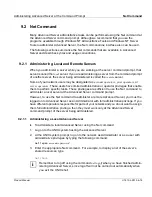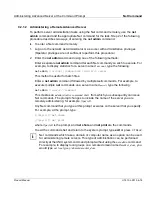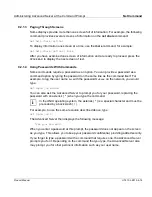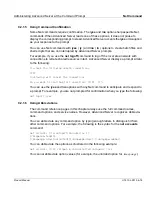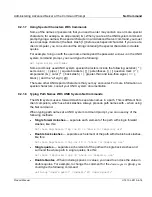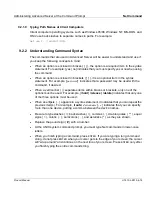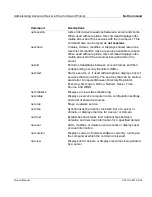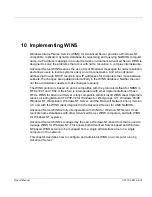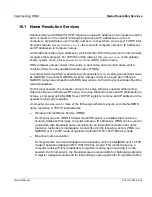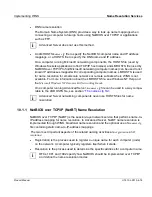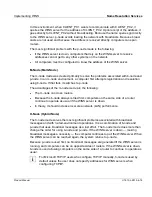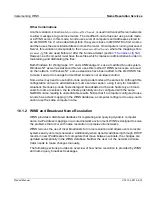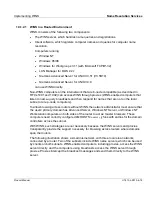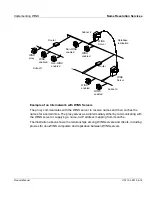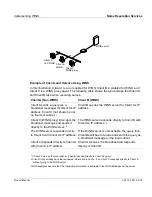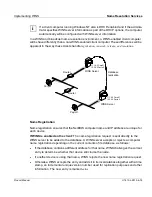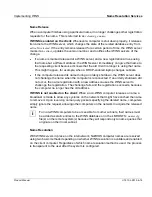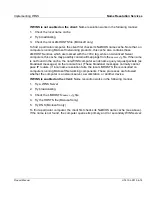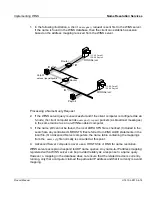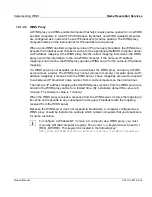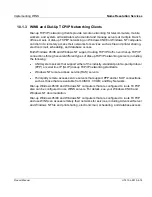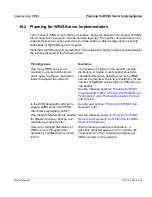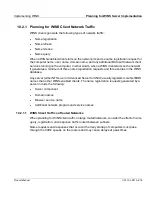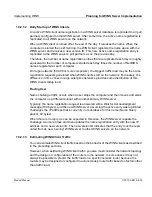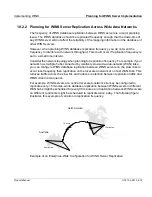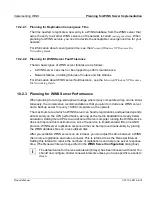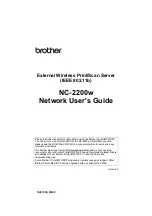
Implementing WINS
Name Resolution Services
Product Manual
U7613-J-Z815-6-76
©
S
iem
e
n
s
N
ix
dor
f
In
fo
rm
at
io
n
s
s
y
s
te
m
e
A
G
1
9
9
5
P
fad
: D:
\O
7
613
e6
\u
761
3e
.k
10
Other Combinations
Another variation, known as
Microsoft modified b-node
, is used in Advanced Server networks
to allow messages to go across routers. The modified b-node does not use p-node mode
or a WINS server. In this mode, b-node uses a list of computers and addresses stored in
an LMHOSTS file. If a b-node attempt fails, the system looks in LMHOSTS to find a name
and then uses the associated address to cross the router. On computers running Advanced
Server, this variation corresponds to the
Siemens modified b-node
where the mappings from
a
names.cfg
file are used before or after the b-node attempt (section
“The names.cfg file”
).
However, each computer must have these files which creates an administrative burden in
maintaining and distributing the files.
Both Windows for Workgroups 3.11 and LAN Manager 2.x use a modified b-node system.
Windows NT as well as Advanced Server uses this method if WINS servers are not used
on the network. In Windows NT, some extensions have been added to the LMHOSTS file
to make it easier to manage but modified b-node is not an ideal solution.
Some sites may need to use both b-node and p-node modes at the same site. Although this
configuration can work, administrators must exercise caution, using it only for transition
situations. Because p-node hosts disregard broadcasts and b-node hosts rely on broad-
casts for name resolution, the two hosts potentially can be configured with the same
NetBIOS name, leading to unpredictable results. Notice that if a computer configured to use
b-node has a static mapping in the WINS database, a computer configured to use p-node
cannot use the same computer name.
10.1.2
WINS and Broadcast Name Resolution
WINS provides a distributed database for registering and querying dynamic computer
name-to-IP address mappings in a routed network environment. WINS is designed to solve
the problems that occur with name resolution in complex internetworks.
WINS reduces the use of local broadcasts for name resolution and allows users to locate
systems easily on remote networks. Additionally, when dynamic addressing through DHCP
results in new IP addresses for computers that move between subnets, the changes are
updated automatically in the WINS database. Neither the user nor the network adminis-
trator needs to make changes manually.
The following sections provides an overview of how name resolution is provided by WINS
and name query broadcast messages.

